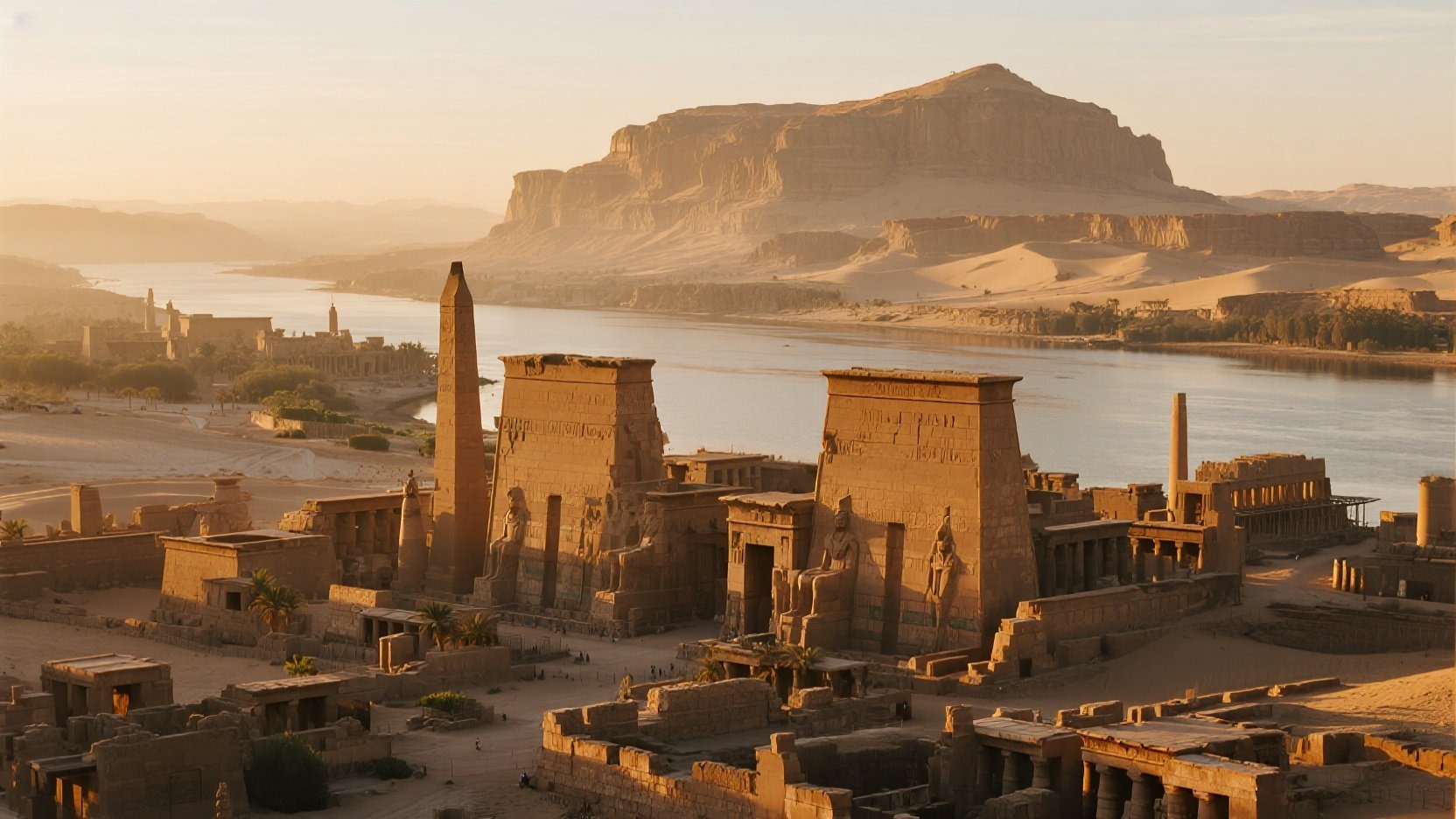Few destinations in the world evoke the same sense of wonder and mystery as Ancient Thebes, the capital of Egypt during the New Kingdom. Nestled along the banks of the Nile River, this city of gods and pharaohs was once a thriving center of culture, religion, and power. Today, its ruins invite travelers to step back in time and walk in the footsteps of history, offering glimpses into a civilization that shaped the course of human development.
Thebes, known as Waset to the ancient Egyptians, flourished over three thousand years ago. Its strategic location on the Nile made it a hub for trade and communication, while its proximity to the desert provided a natural barrier against invaders. The city was not just a political capital; it was a spiritual heartland. Temples dedicated to Amun-Ra, the king of gods, dominated the skyline, and their grandeur remains breathtaking even in ruin. The Karnak Temple Complex, a sprawling labyrinth of towering columns, obelisks, and sacred lakes, is a testament to the architectural genius of the ancient Egyptians. Walking through its massive hypostyle hall, one can almost hear the echo of prayers and rituals performed millennia ago.
Across the river lies the Valley of the Kings, a burial ground for the great pharaohs of the New Kingdom. Hidden beneath the sands, these tombs were designed as eternal resting places, filled with treasures and adorned with intricate artwork depicting the journey to the afterlife. Among them, the tomb of Tutankhamun stands as a symbol of the wealth and mystique of Ancient Egypt. Although smaller than many others, its discovery in 1922 by Howard Carter unveiled a treasure trove that captivated the world. Exploring the valley is like peeling back layers of history, revealing the beliefs and ambitions of a civilization obsessed with immortality.
Yet Thebes is more than its monuments. It is a place where the Nile whispers stories of the past, where the desert sands conceal secrets waiting to be uncovered. The landscape itself is a reminder of the delicate balance the ancient Egyptians maintained between life and death, chaos and order. The lush green banks of the Nile contrast sharply with the barren, golden dunes, mirroring the duality that shaped their worldview.
For modern travelers, Thebes offers an unparalleled opportunity to connect with history. The Luxor Museum, located near the site of the ancient city, showcases artifacts that bring the past to life, from statues of gods to everyday items used by the people who once walked these streets. The museum’s careful curation complements the experience of visiting the ruins, providing context and insight into the lives of those who built this extraordinary civilization.
As the sun sets over the Nile, casting a warm glow on the remnants of Thebes, it becomes clear why this city has captured the imagination of historians, archaeologists, and adventurers alike. It is a place where time seems to stand still, where the sands and waters hold the essence of a bygone era. To walk in the footsteps of Ancient Thebes is to immerse oneself in the legacy of a people who dared to dream of eternity—and left behind a world that continues to inspire awe.
Whether you are drawn by the allure of its temples, the mystery of its tombs, or the sheer beauty of its surroundings, Thebes promises an unforgettable journey into the heart of ancient Egypt.
